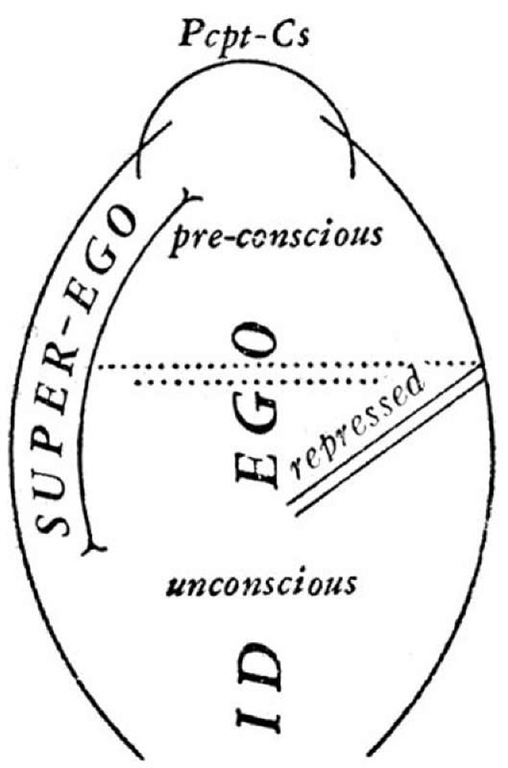Sigmund Freud is one of the most well known theorists for psychotherapy. He developed extensive theories about the psyche and human sexuality. His theory relies on several fundamental concepts; the structure of the human psyche is comprised of the unconscious, preconscious and conscious zones. There are two primitive drives, the libido (eros) and the death instinct (thanatos)

According to Freud's psychoanalytic theory of personality, it is composed of three elements; the id, the ego and the super ego. These elements work together to create complex human behaviours. The id is a part of the personality that is present from birth; it is entirely unconscious and includes the instinctive and primitive behaviours. It is driven by the pleasure principle; which strives for the immediate gratification of all desires, wants and needs. The ego is responsible for dealing with reality; the ego controls the id and ensure that impulses from the id are controlled, and conform to societal values.The ego controls the conscious, pre conscious and unconscious mind.The super ego is the final component of personality, and it holds all of our internalised moral standards and ideals that we acquire from parents and society. It is our sense of right and wrong.
The theory of desire was established by Freud within his case study of 'Little Hans'; a 5-year old boy with a phobia of horses, particularly being bitten by one. This fear stemmed from the oedipus complex - his oedipal desire and subsequent castration anxieties where sustained unconsciously and manifested as a fear of horses.The recovery of the fear came through a stage of development, within Hans' fantasies, where his castration anxieties were overcome.
Desire has also been studied by Lacan, who describes the unconscious as a language. "Desire is neither the appetite for satisfaction, nor the demand for love, but the difference that results from the subtraction of the frist from the second" In this, Lacan establishes the difference between needs and desires; needs can be satisfied, but desires cannot. His theory 'Desire is the desire of the Other' refers to our position as desiring subjects, the "Other" refers to the symbolic order; socialisation, language and culture. Desire comes from the outside, a desire is therefore established by recognition of the "Other". It is then conclusive that identification of the self makes the self desirable, and the self have the ability to be desired. Identification begins by establishing the narcissistic self, the mirror stage, is where the child identifies themselves as an other for the first time. The further identification with a parental figure enables them to overcome the Oedipus complex; this allows them to formulate the conception of their gender, with the parent being the archetype of this.
Advertising uses this theory in order to make a product desirable to their audience. The mirroring of the model to the audience depicts the persona you can adapt to by having or using the product. This creates a need for the product, but then also a desire to become the person that is portray - or adapt to this identity when using the product. Advertising has directed more towards what the consumer could gain from possessing the product, rather than referring to the product themselves. Advertisers tried to sell their product by stimulating unconscious triggers.
No comments:
Post a Comment